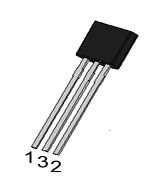Date:2025-06-24 Categories:Product knowledge Hits:251 From:Guangdong Youfeng Microelectronics Co., Ltd
3、 Working principle:
The working principle of a silicon carbide transistor is similar to that of a traditional transistor made of silicon material. When a forward voltage is applied to the PN junction, the holes in the P region and the free electrons in the N region will diffuse to the isolation region. When a forward voltage is applied to the base, free electrons in the N region are attracted to the base, forming electron hole pairs, while holes in the N region diffuse towards the base. When electron hole pairs enter the base, due to the N-type doping type of the base, they further diffuse towards the collector. This forms a current, thereby achieving the amplification and switching functions of the transistor.
4、 Application:
Silicon carbide triodes can be widely used in the field of power electronics, including frequency converters, UPS power supplies, electric vehicles, solar inverters, etc. Its high temperature, high frequency, and high voltage resistance characteristics make it have broad application prospects in efficient energy conversion and power transmission.
5、 Working status:
The working state of silicon carbide transistor mainly includes conduction state and turn off state. In the conducting state, a narrow potential barrier is formed at the P-N junction of the transistor, allowing current to pass through. In the off state, the potential barrier at the P-N junction increases, preventing current from passing through.

Previous: Classification, Structure, and Principle of MOSFET